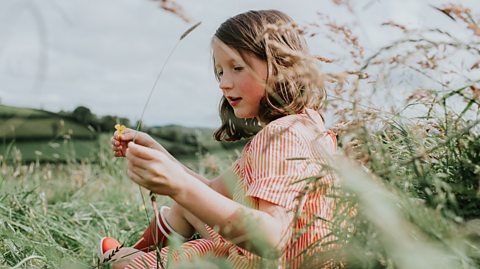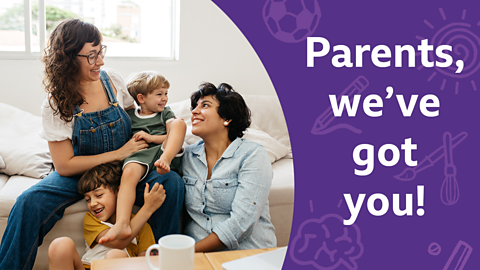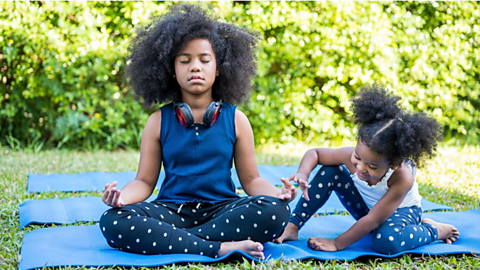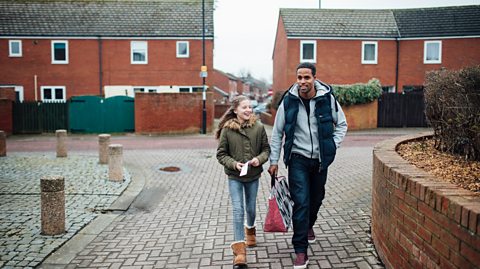Lots of schools across the country have started to teach students about mindfulness.
Maybe your child has come home and spoken about it and you want to know more. Or maybe you've heard about it in the news and want to know how it might help your child.
To show how mindfulness might be a good habit for your child to get into – and how it could help you as a parent - Parents’ Toolkit has produced the two animations below to help explain.
We've spoken to Faiy Rushton at the Mindfulness in Schools Project and Willem Kuyken, Ritblat Professor of Mindfulness and Psychological Science at University of Oxford and author of Mindfulness for Life, to explain the concept of mindfulness and how children and adults could both use it in their lives.
Lots of schools across the country are introducing mindfulness to the classroom. You might have heard it mentioned. But what is it? Mindfulness is all about choosing to pay attention to what we're experiencing in the present moment. It's been shown to reduce stress, anxiety and depression. In some form, mindfulness has been part of many cultures. But the modern term that we use today dates back to the late nineteen seventies. Professor Jon Kabat-Zinn took many traditional and longer established practices adapting them for a mainstream audience and developing a technique called M B S R, mindfulness based stress reduction.
He worked with people who were suffering from chronic pain, rather than trying to ignore their pain, he instead, helped them to focus on the sensations they were feeling. This helps some patients to relate to their pain in a new way and better manage their symptoms, transforming their lives. These principles have become what we today call mindfulness. They're being used in some schools, and are sometimes recommended by the NHS.
Maybe your child has mentioned some of the phrases they're learning. Mindful breathing. When practising mindfulness, they might be told to focus on their breath. This is because mindful breathing is a way to center yourself, your breath is part of you, inside your body, always there and present in the moment. Focusing in helps you ground yourself in the moment too.
Centering or grounding yourself isn't about standing or sitting still.It's about finding a stable point you can focus on, an anchor to come back to if your mind wanders. The breath is not the only way to ground yourself.
Body scanning is the technique of moving your attention around your body. Often starting by focusing on the soles of your feet, moving it up the body working up your legs up to your chest and to the top of your head.
Exploring sensations in the body has two benefits. It helps us anchor attention in the present moment. And it helps us recognise stress in the body. Learning to anchor attention in the body increases our ability to observe thoughts, rather than always being caught up in them. This can help us see things more clearly and recognise that thoughts come and go. They're not permanent.
Another thing your child might be doing is naming their emotions. Learning to recognise emotions and how they show up in the body helps us understand ourselves better. And these physical cues can prompt us to use mindfulness practice when we need to. Like if we're feeling worried or anxious.
As parents, understanding these mindfulness practices could empower you to support your child's wellbeing. Mindfulness isn't just a school lesson, it can be a valuable life skill. It could help them learn good habits. Being self aware, noticing how they feel, giving them tools to use in difficult moments and enjoying present experiences, rather than always being caught up in thinking about the past or the future which can cause worry or anxiety. By appreciating it you might better understand why your child is learning about mindfulness and can discuss with them how they might use it.
Understanding mindfulness
Mindfulness may seem quite abstract and a bit difficult to get your head round. But in essence it’s a technique that you can learn to help you be present in the moment.
Faiy says that a good way to explain mindfulness can be to think about a time you’ve felt disconnected from where you are, “Have you ever been somewhere with a beautiful view, you’re really enjoying the experience when suddenly a work deadline pops into your head? Before you know it, you are mentally back at work.”
Through mindfulness, you can keep focused on what is going on in the current moment, explains Faiy, “We can choose to bring ourselves back to awareness of the present moment by reconnecting with the body, which is always in the present. Perhaps through our senses; taking in what we can see, hear, touch, taste, smell and before we know it, we are fully connecting again with the here and now.”
Mindfulness as we talk about it today came about as a way to help people coping with chronic pain. Parts of mindfulness have roots in cultures across the world but the term we use today comes from the late 1970s when Professor Jon Kabat-Zinn introduced Mindfulness-Based Stress Reduction. He adapted the traditional practices for his modern-day patients, transforming some of their lives.
Mindfulness techniques
There are a variety of different mindfulness techniques, some of which are explained in these videos. One of them is mindful breathing. This technique encourages you to pay attention to your breath, using it as an anchor to ground yourself in the present moment.
“We might choose to focus on the place in the body where we can feel the sensation of breathing the strongest; often at the nose, or the back of the throat, in the chest or the stomach, and bring attention to the movement of breath coming into and out of the body,” explains Faiy, “The breath is used as an anchor point because it is always there and it’s not something we have to choose to do, it’s happening automatically. When we notice our attention move away from this focus or anchor point, we invite our attention back to the breath.”
Mindful breathing is not the best technique for everyone, explains Faiy, “Sometimes people who have experienced trauma might find it difficult to bring attention to the breath. It can be triggering and reactivate the trauma experience. For this reason, mindfulness teachers will, alongside options for focusing on the breath, also give options for the anchor or focus point to be somewhere else in the body or will offer focus options outside the body - like something the person can see or hear instead.”

Body scanning is another technique. “The body scan involves being guided to explore the sensations you are noticing in different parts of the body,” says Faiy, “It tends to begin at the feet and then slowly moves up the body until we eventually reach the head - then attention is widened out to the whole body. If someone notices that their attention has moved away from the place in the body that’s being explored, they are encouraged to reconnect to that part of the body again and the sensations they are noticing there.”
Benefits of mindfulness
So, why should you bother to try mindfulness out? Well, . And Professor Kuyken believes that there are other benefits that can come from mindfulness too.
We use our body and mind every moment of our life, for the whole of our life. In this sense, training the mind can potentially benefit every aspect of our lives.
“There are many different mindfulness practices that can be used for different purposes - to steady the mind, to develop control of our attention, to cultivate attitudes such as kindness, and to uncover values.”
Various studies have shown that mindfulness can help improve:
- athletic performance
- attention
- blood pressure
- sleep
However, it is important to highlight that mindfulness isn’t right for everyone all of the time as Faiy Rushton explains: “It is not recommended for people who are currently experiencing an active episode of mental ill health, currently depressed or experiencing extreme anxiety or other mental illnesses.
"Just as we might generally say to people that it would be beneficial to go to the gym and keep fit, we might not say that that would be true for someone who had just broken their leg. If someone is experiencing mental illness or an episode of poor mental health, then that probably isn’t the right time for them to learn mindfulness.”
Mindfulness is being taught in some schools, but it's not just for children. It's something that parents and carers can add to their lives too, and, if you're learning about mindfulness it can help your child with their understanding of it.
Incorporating mindfulness into your daily routine is simpler than you think. It's about embracing each moment with mindful awareness. Imagine the school run, a flurry of thoughts about breakfast, homework and weekend plans. Instead of getting lost in the chaos, take a moment to focus on your breathing. People notice their breath in different places, for some, it's the air coming in and out of the nose. Some, the rise and fall of the breath in the chest and for others they notice the breath in their stomach as it expands and relaxes. Take a moment to follow your breath.
You can ground yourself in other ways too. Sit comfortably and put both feet flat on the floor, feeling the weight of each foot against the ground. Try and really notice the sensations. Maybe you can feel your socks or your shoes around your feet. Are they hot or cold? This can help to anchor you to the present. Don't worry if your mind wanders. Let it come back to the anchor you have chosen as your focus.
When frustrations arise see if you can stay grounded. If you're faced with a difficult situation like being asked repetitive questions by your child. Take a moment to notice that you're feeling frustrated and how that's affecting your mind and body rather than reacting automatically. See if you can stay grounded, moving your focus to a helpful anchor like your breath or your feet and stay there until you feel a bit steadier, then meet these frustrations with kindness and care.
With repetition and practise, you can learn more about mindfulness and integrate it into your daily routine. Mindfulness is about bringing our full attention to what we are doing. These techniques are something you can do anywhere. You can practise it using any of your senses. What can you see, hear, touch, taste and smell. Try practising it while eating, savouring each bite, or even during a casual stroll down the street, paying mindful attention to each and every step. Being in the moment could help you, and help your child to be calmer, happier and more present.
Adults and mindfulness
Mindfulness isn’t just for children - it’s something that adults can do too. “The benefits of mindfulness are not age restricted, they can help everyone,” says Faiy, “It can help you in your work and home life with the same things it might help your child with; coping with difficulty better and being present and noticing the good things more often.”
There is research that shows that just one person practising mindfulness in a family can have a positive impact on the wellbeing of everyone in that family.
You trying out mindfulness could help your children to learn more about it, “There is good evidence that children learn many of the dimensions of mindfulness indirectly, through the climate and culture of their home, school and friends,” explains Professor Kuyken, “Providing a home climate which values attention, attitudes of curiosity, kindness and care and develops values, is a great way of teaching mindfulness.”
Next time your child mentions mindfulness to you, hopefully you will be able to have a conversation about it and maybe it can be something that you can try to add to your lives.

Further help
Children’s mental health specialist Dr Pooky Knightsmith shares 10 ways to help your child work through their worries.
As children’s emotions develop, there are bound to be ups and downs for both them and you as a parent. Here are some tips for how to help children understand their emotions.
If you would like some activity ideas to do with your child to help them express their emotions, try making a feelings tree, playing the emotion face game or you could talk about feelings with toys.

More from łÉČËżěĘÖ Bitesize Parents' Toolkit…
Parents' Toolkit
Fun activities, real-life stories, wellbeing support and loads of helpful advice - we're here for you and your child.

Five ways to incorporate mindfulness into your child’s day
Mindfulness can be a helpful concept for a child to practise. Here are some top tips as well as activities you can do at home.

Four steps to chatting with your child about their mental health
Starting a conversation about mental health isn't easy. Especially if your child is reticent to open up. This advice from the charity Young Minds may help.

Mental health first aid kit for parents: Who to ask and what to do
Worried that your child needs help with their mental health? Here's how you can access professional help and support your child while you wait.

Six ways to manage loneliness as a parent
Here are six tips from the experts at the Marmalade Trust to help talk about loneliness and find support as a parent.

School anxiety and refusal: How to help your child get through tough times
Tips to help parents understand emotionally-based school avoidance and offer support to their child.
